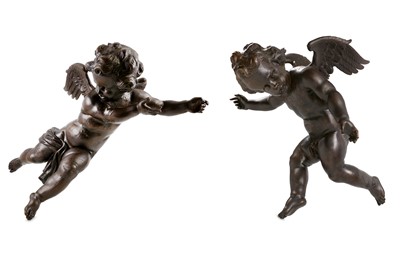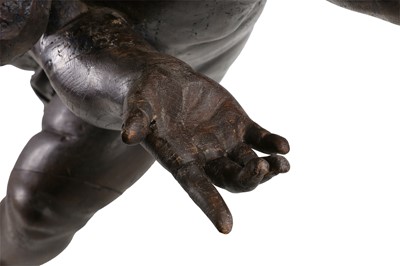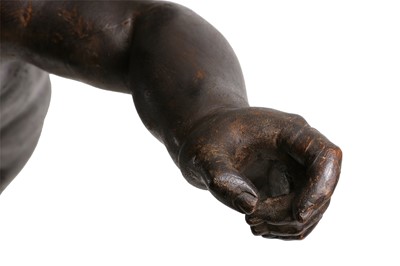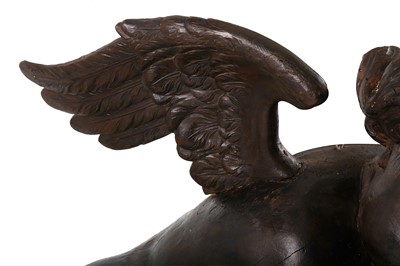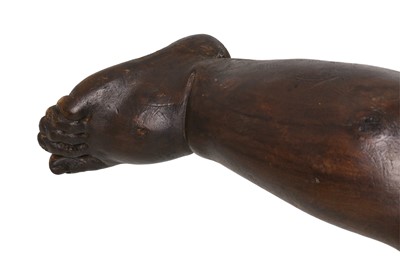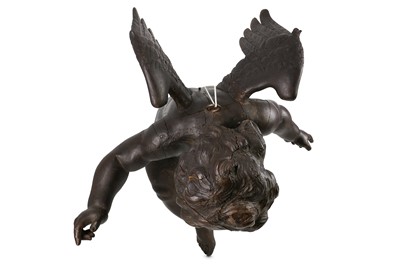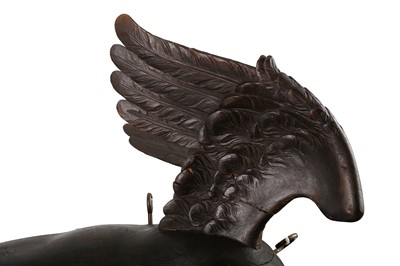10th Mar, 2020 14:00
Fine European Works of Art & Clocks
A LARGE PAIR OF 18TH CENTURY SOUTH GERMAN / AUSTRIAN BAROQUE CARVED WOOD PUTTI circa 1730, the winged cherubs with arms gesturing, with iron loops applied to the back to hang, 86cm high (2) The Baroque notion of putti as plump baby boys was derived from ancient Roman reliefs and statues, usually lightly clad or naked and often with wings, so that pagan images of Cupid could be confused with those of angels (cherubim). They were pioneered in early Renaissance art by Donatello, and became especially useful adjuncts in sculpture, where they performed supporting, mourning, or comforting roles on and around shrines, tabernacles and tombs. Such flying cherubim became one of the favourite motifs of the Baroque in Rome, often inspired by the need to lighten the sombre mood of images of cruel martyrdoms that were so emphasised in the imagery of the Counter-Reformation. Originated there by Algardi, Bernini and Duquesnoy, they rapidly became standard features in the repertory promulgated by their followers and throughout the 17th and 18th centuries. The present pair of putti were most likely part of a large decorative scheme around an altarpiece, gesturing towards a large painting or panel.
Sold for £4,375
Includes Buyer's Premium
Do you have an item similar to the item above? If so please click the link below to submit a free online valuation request through our website.

